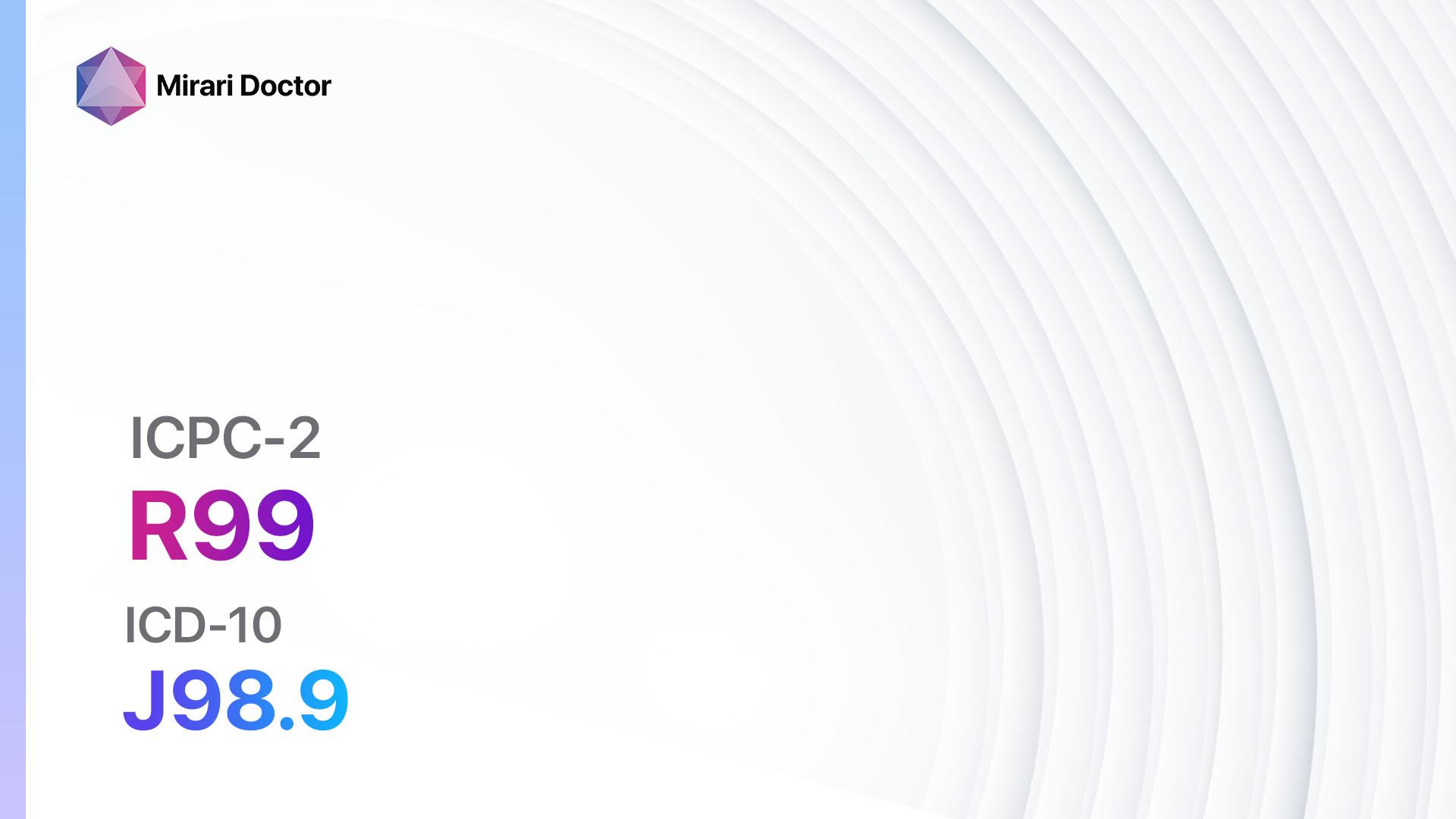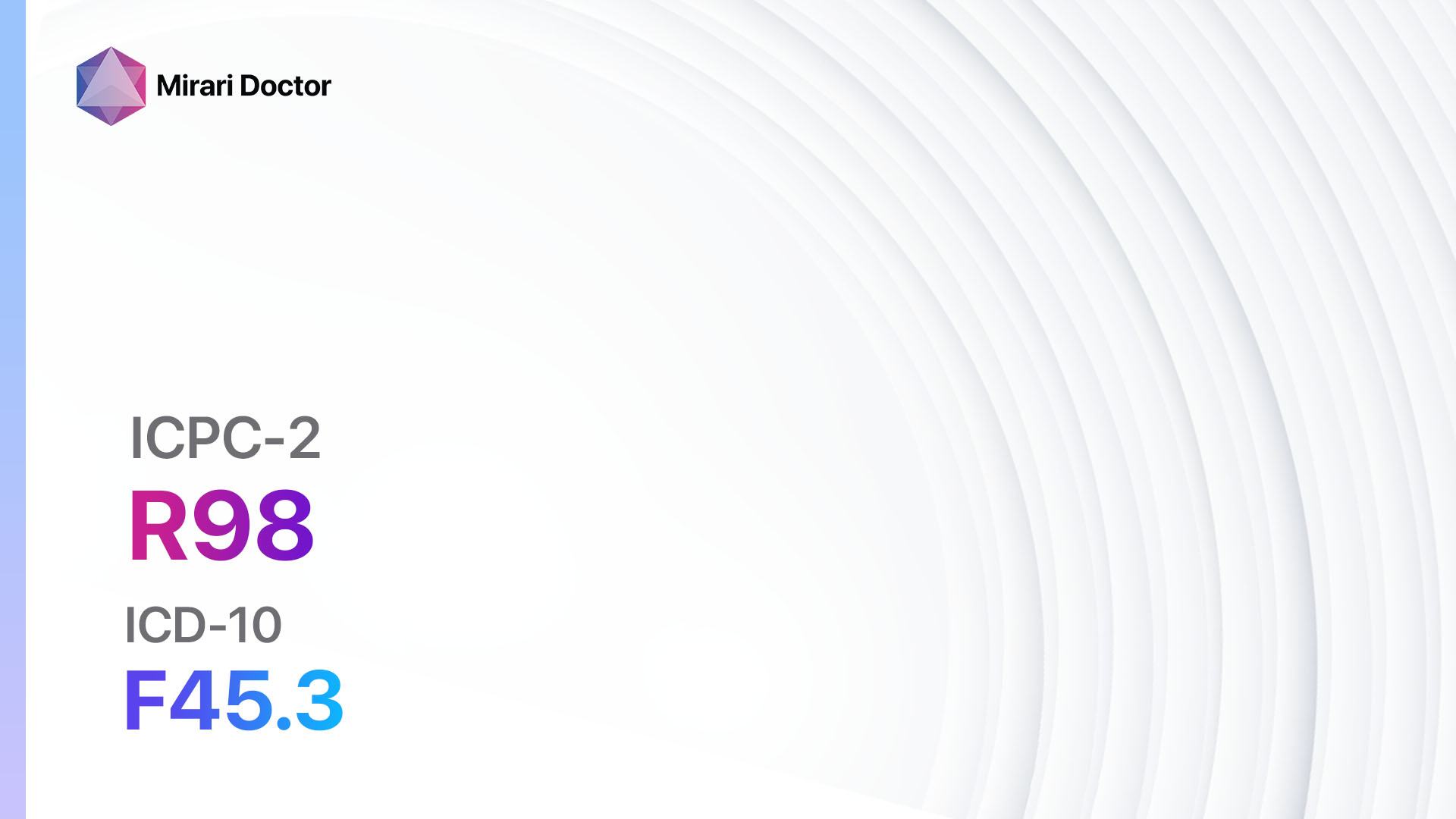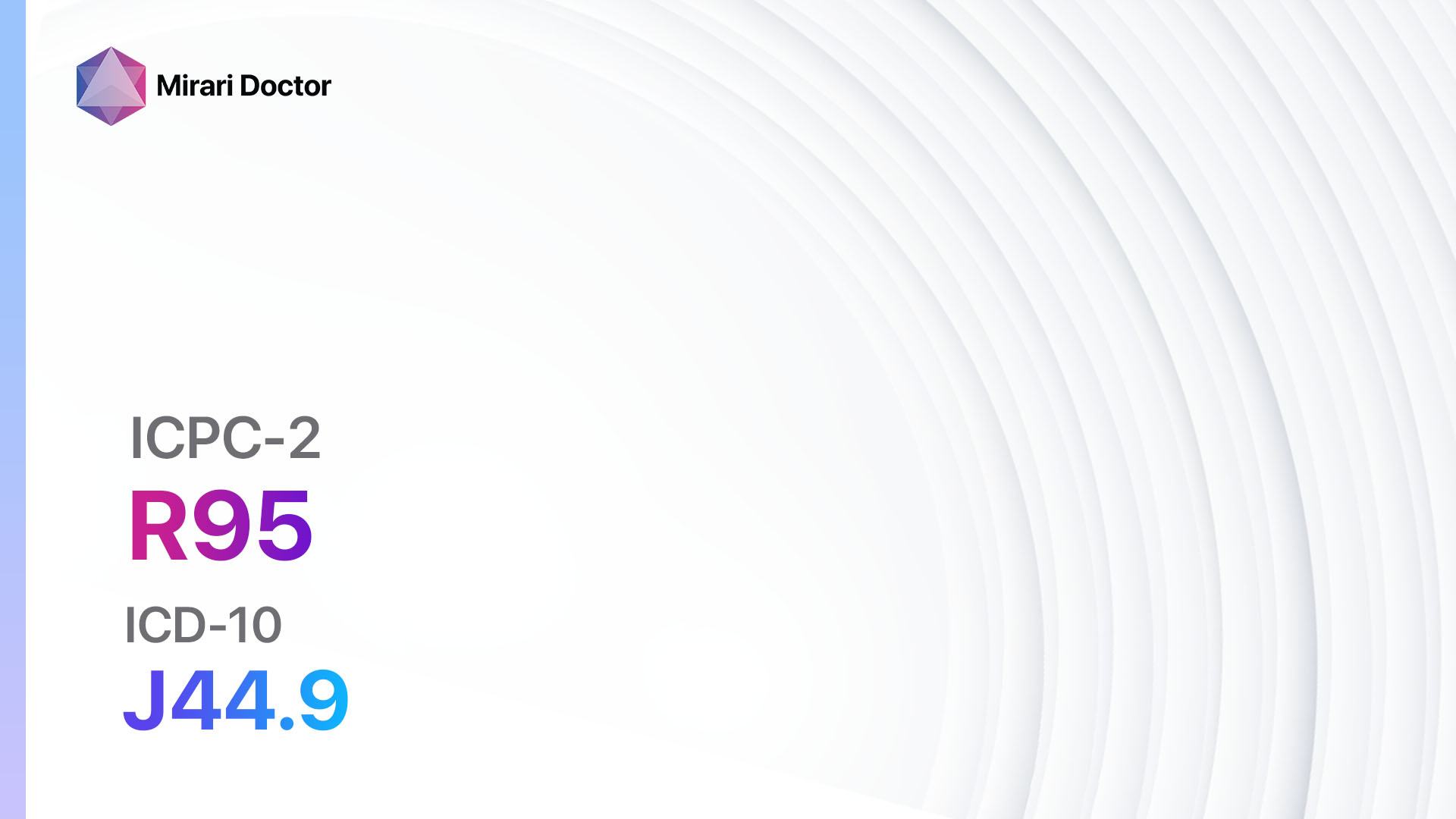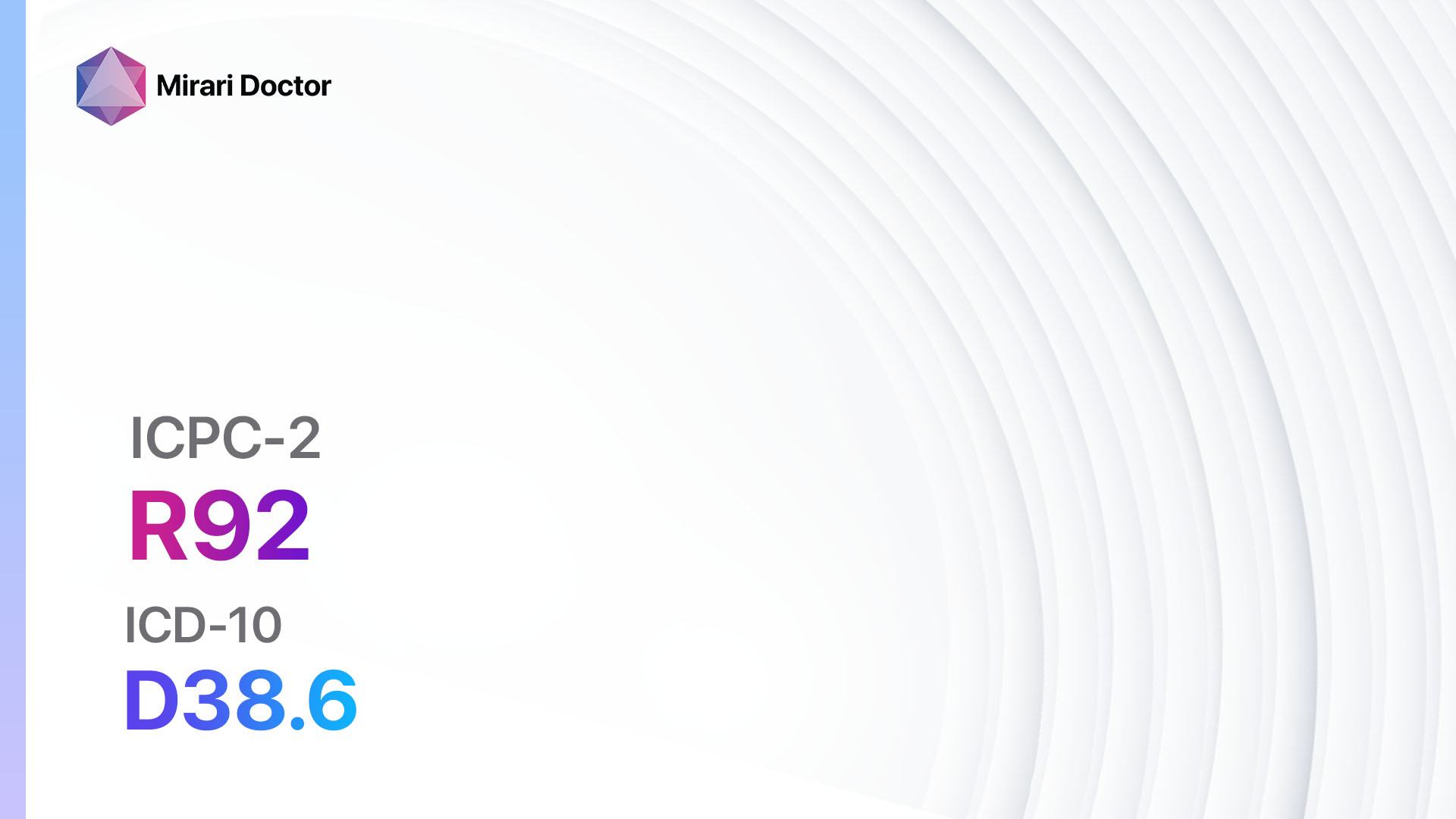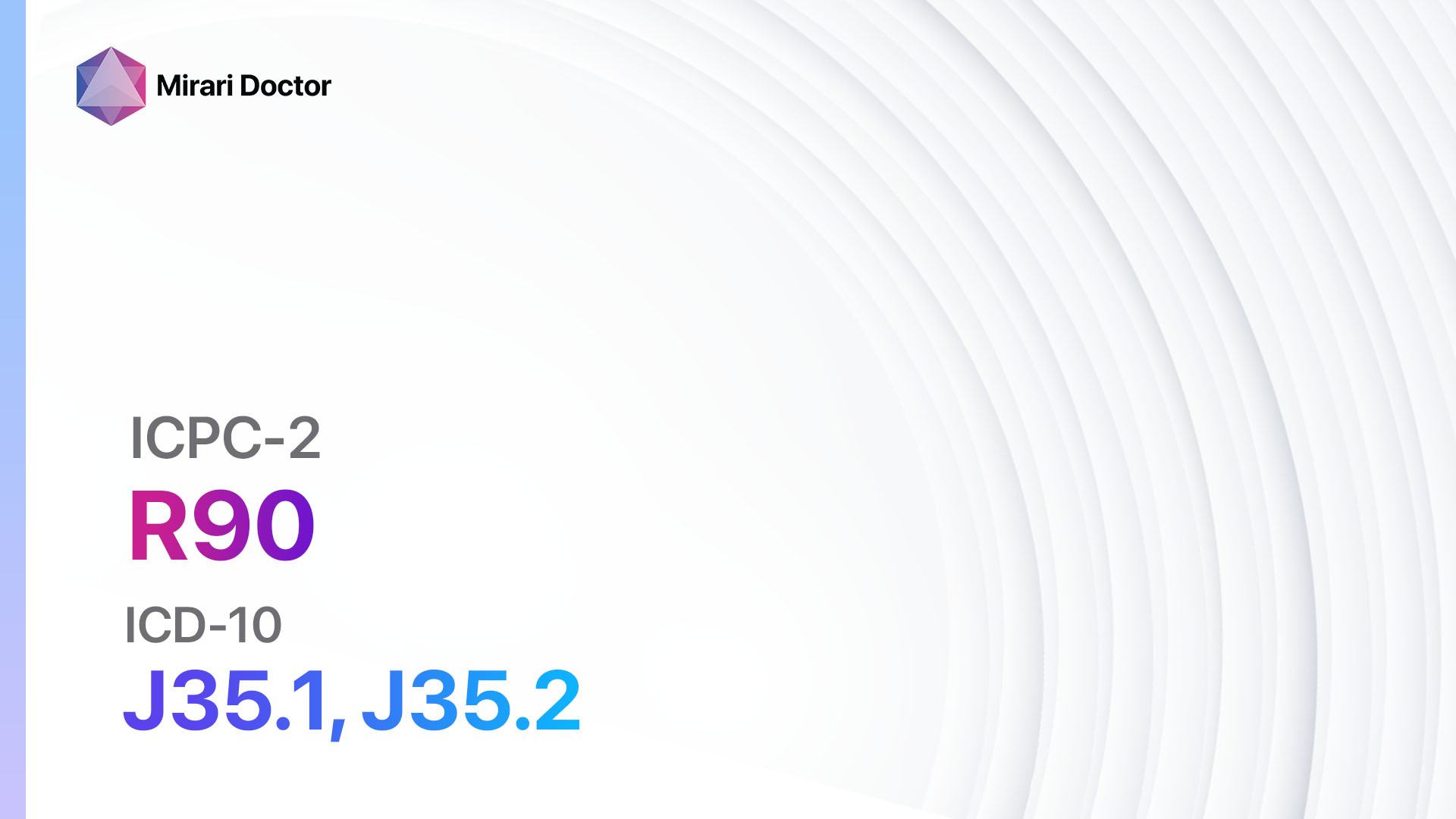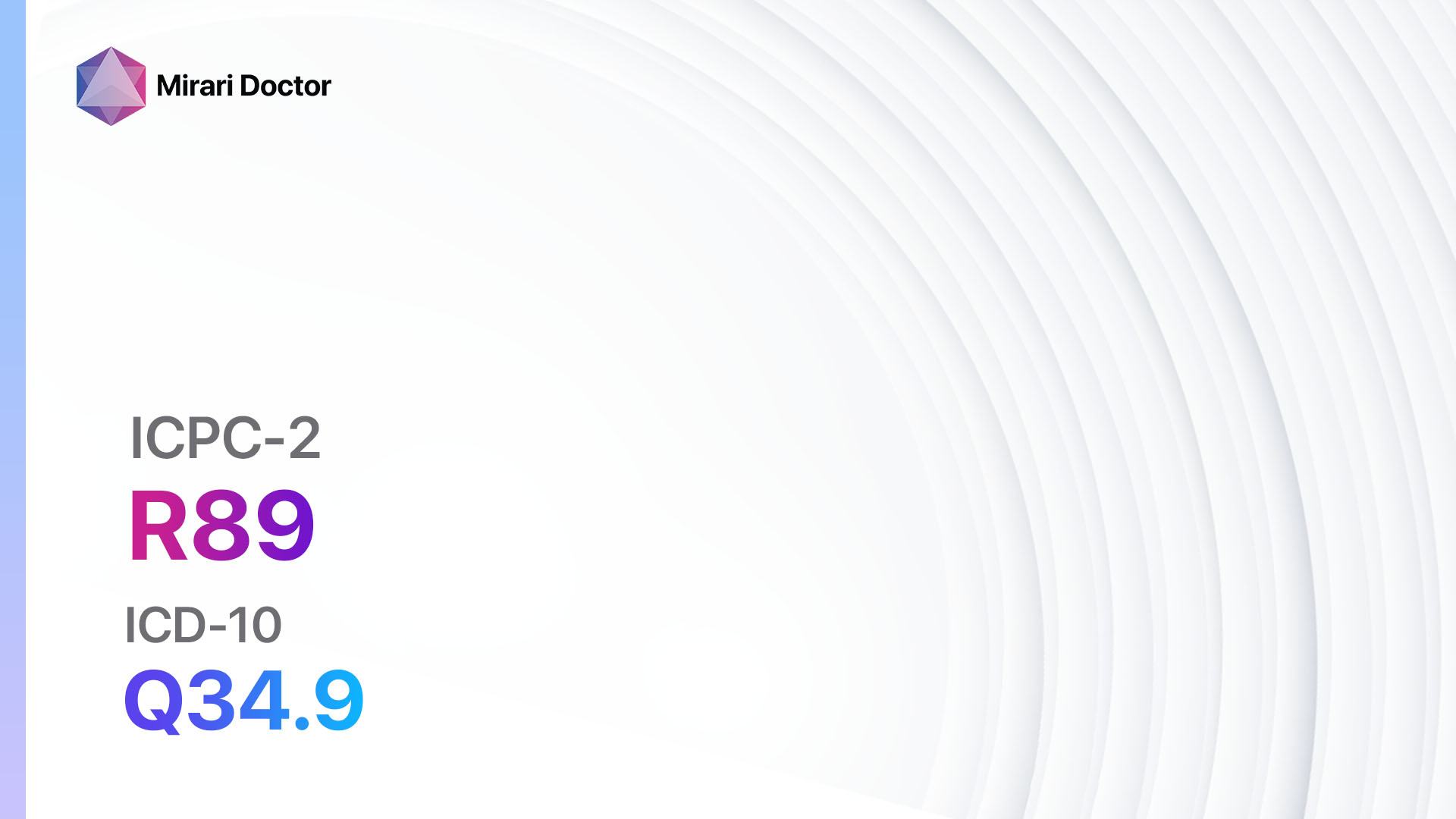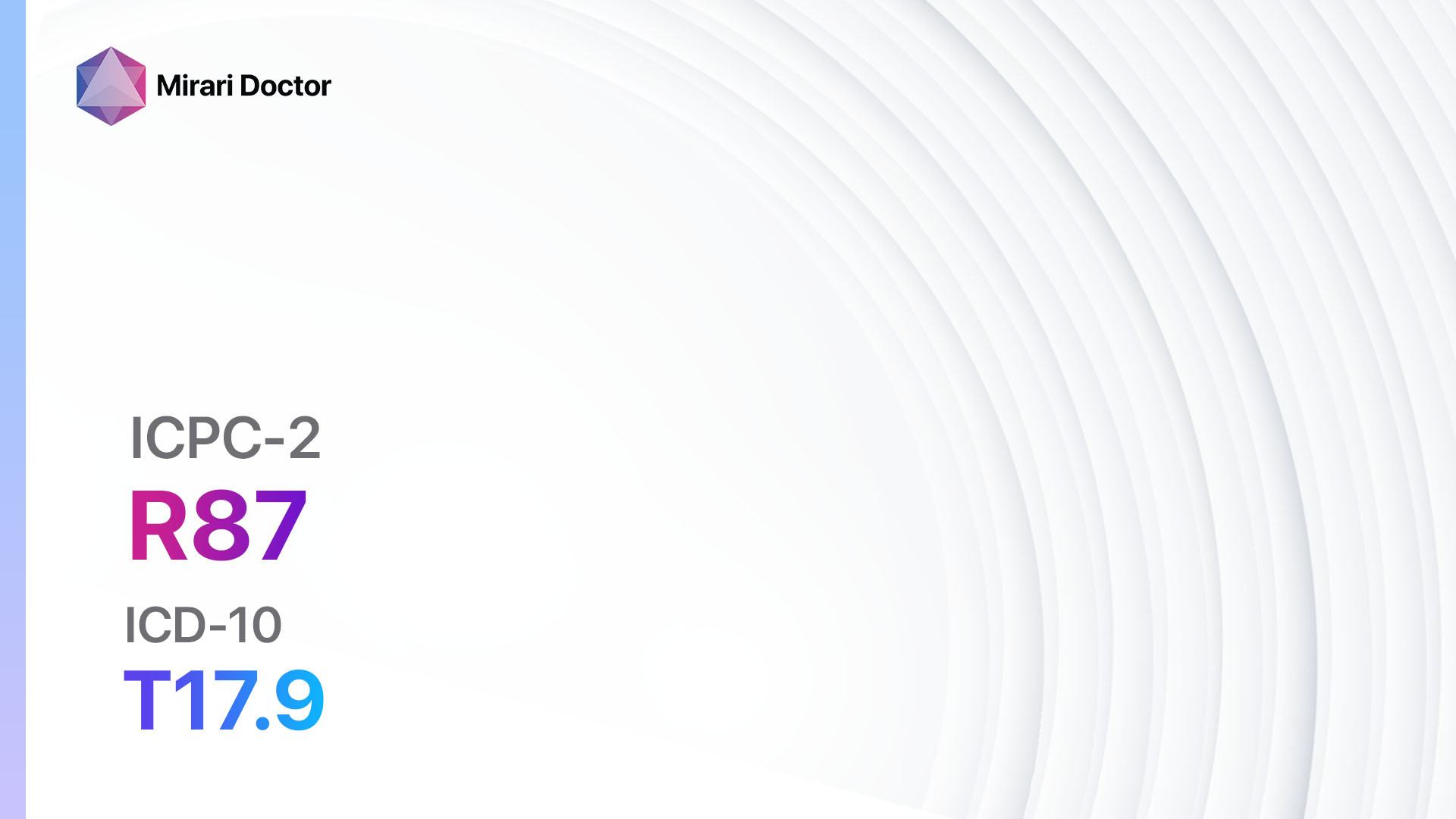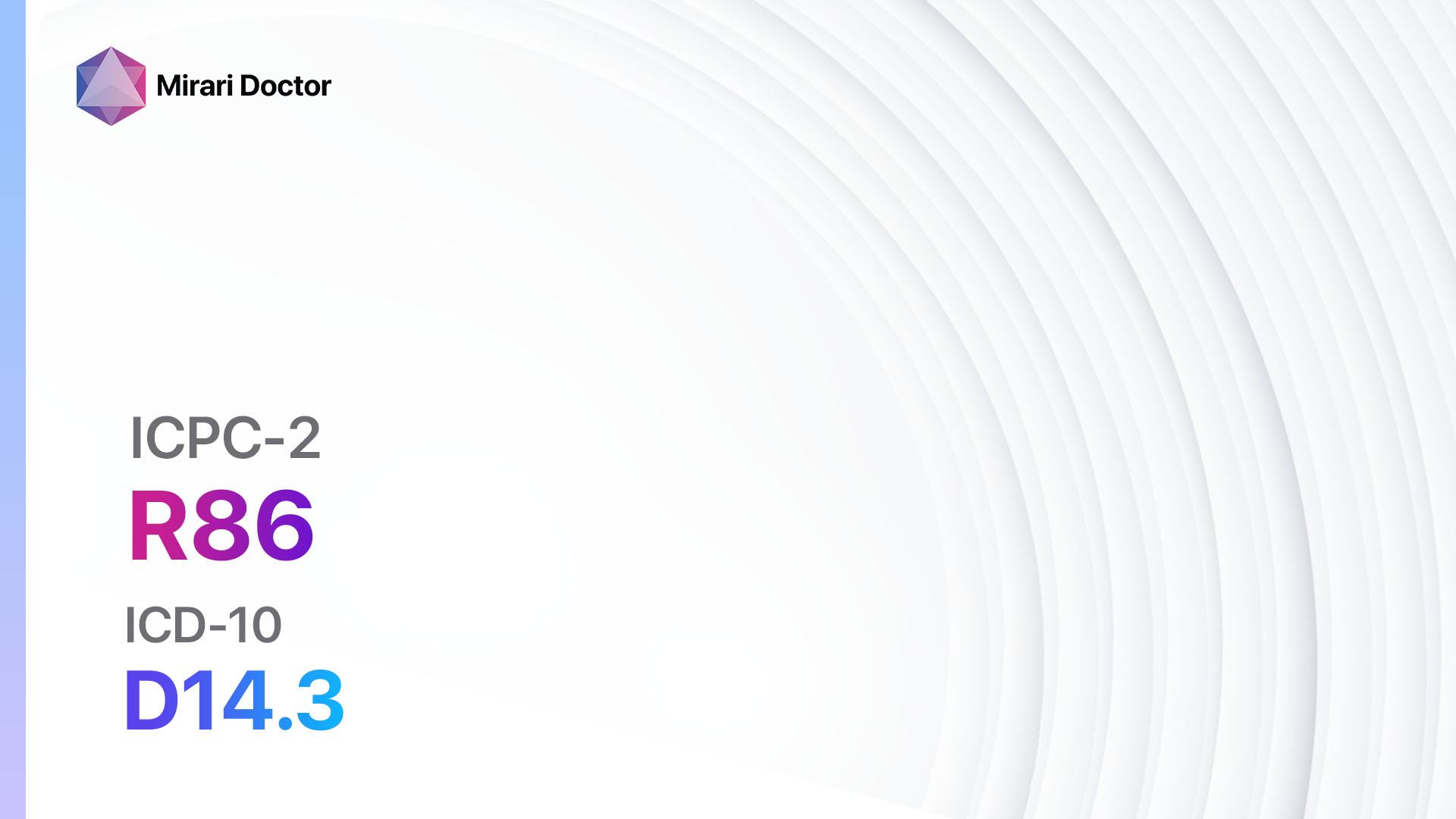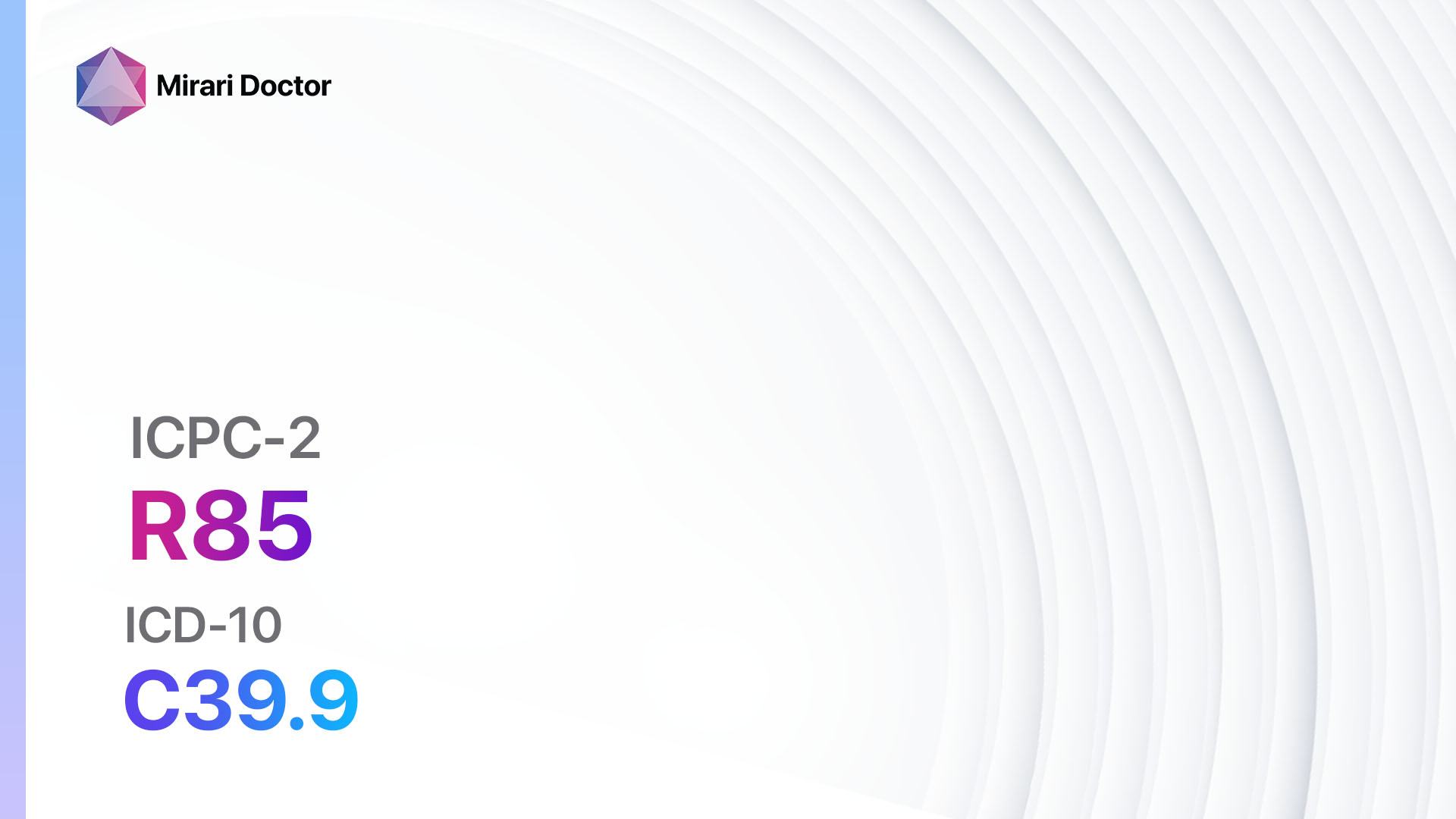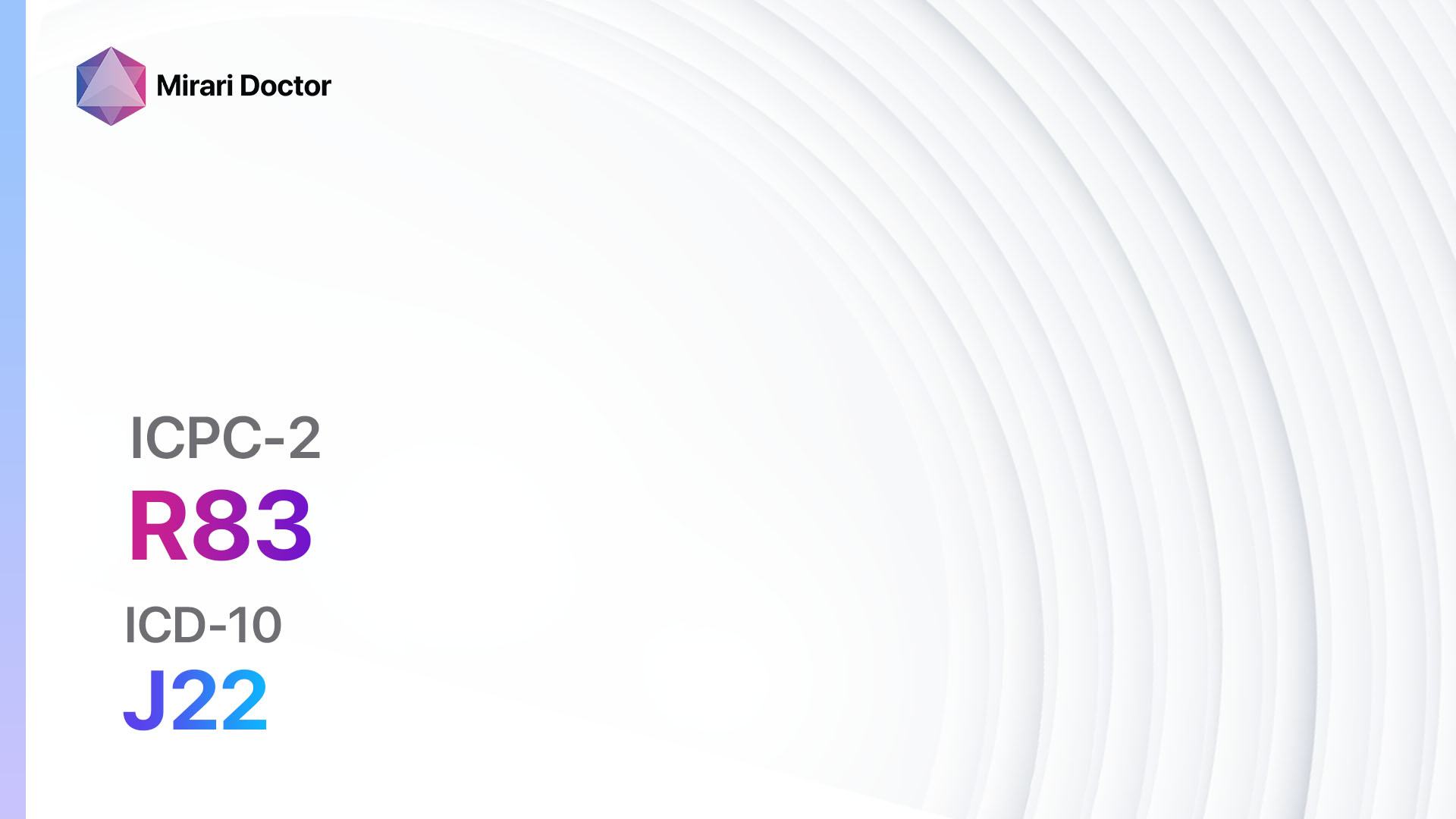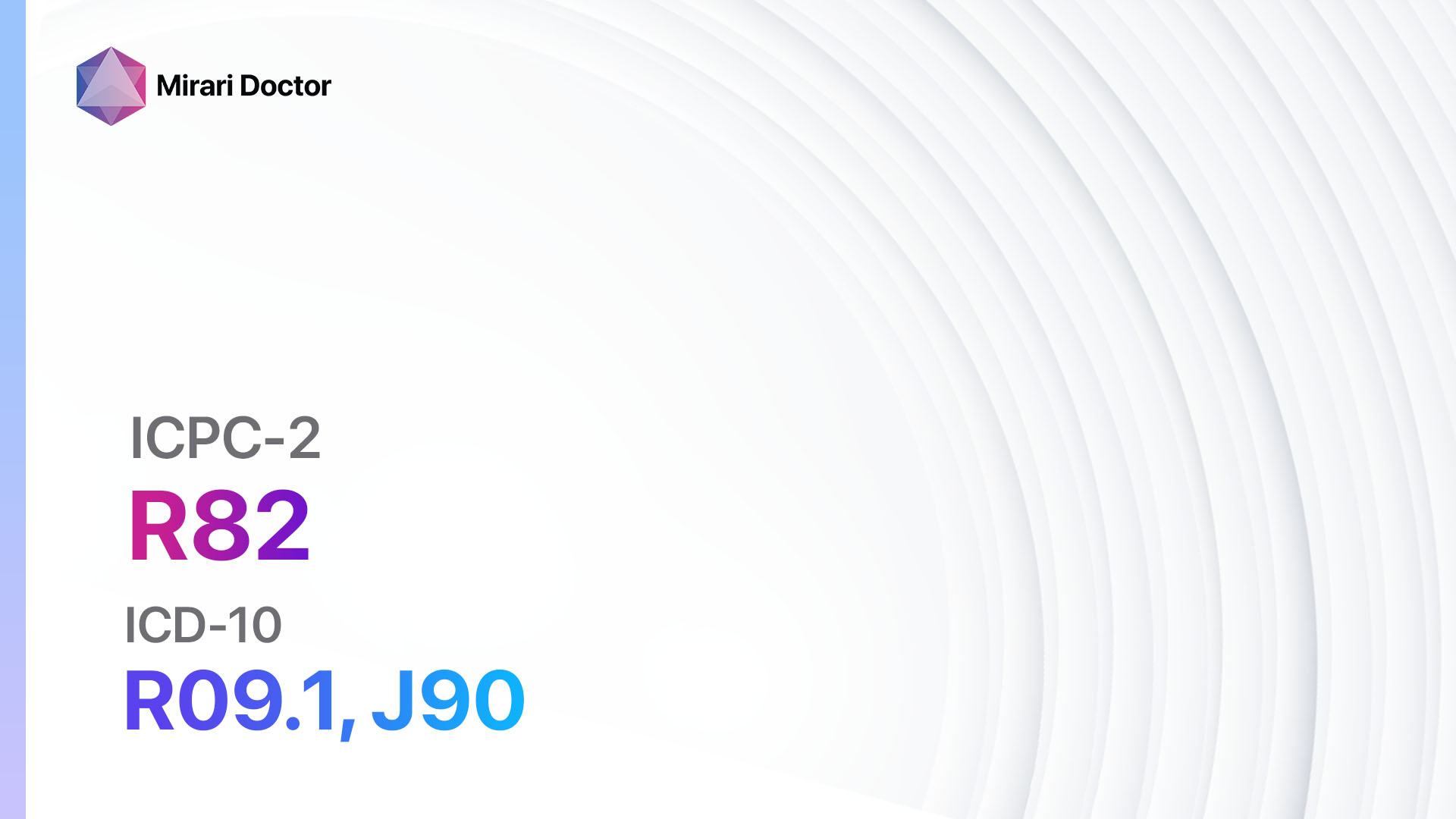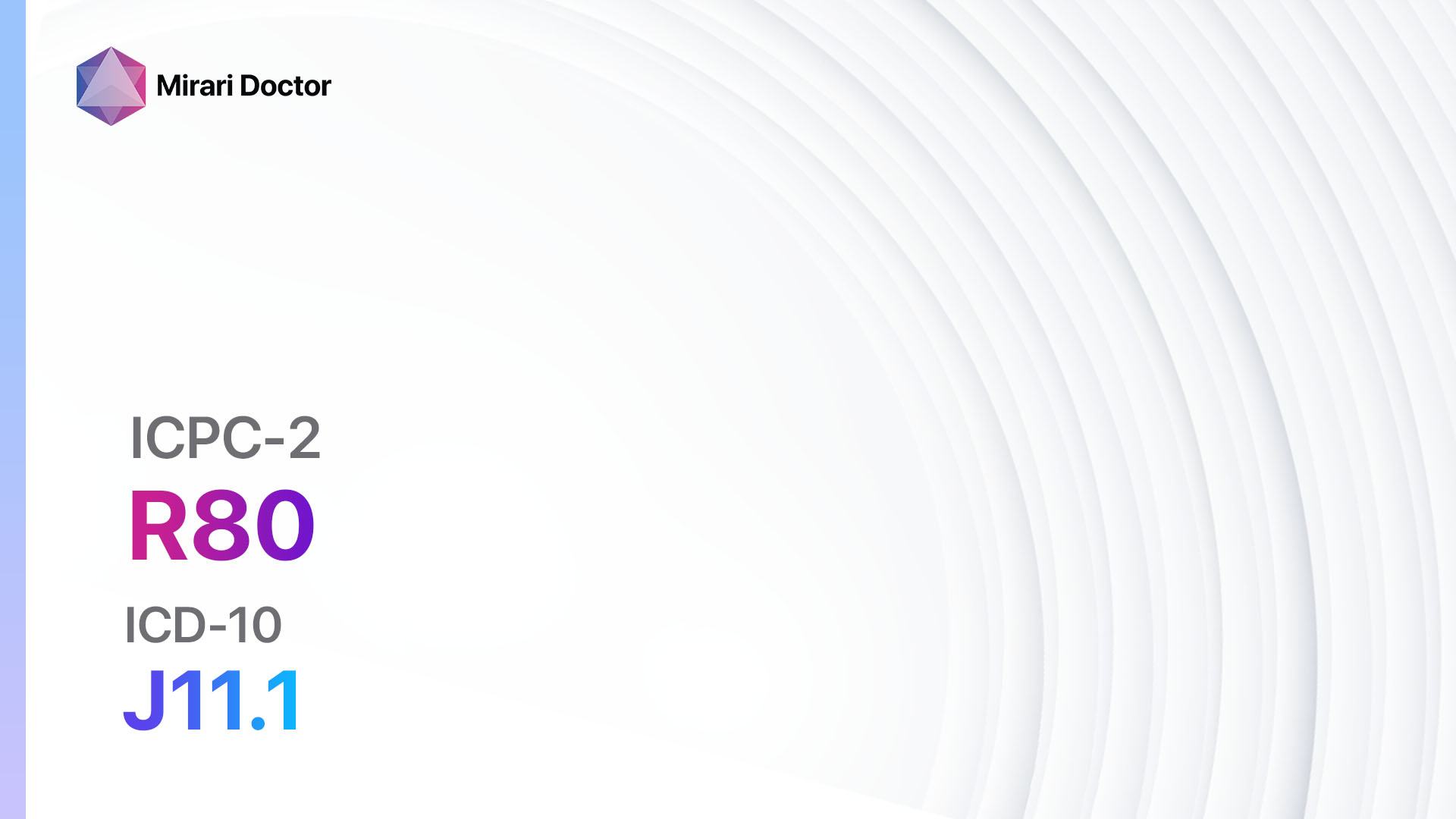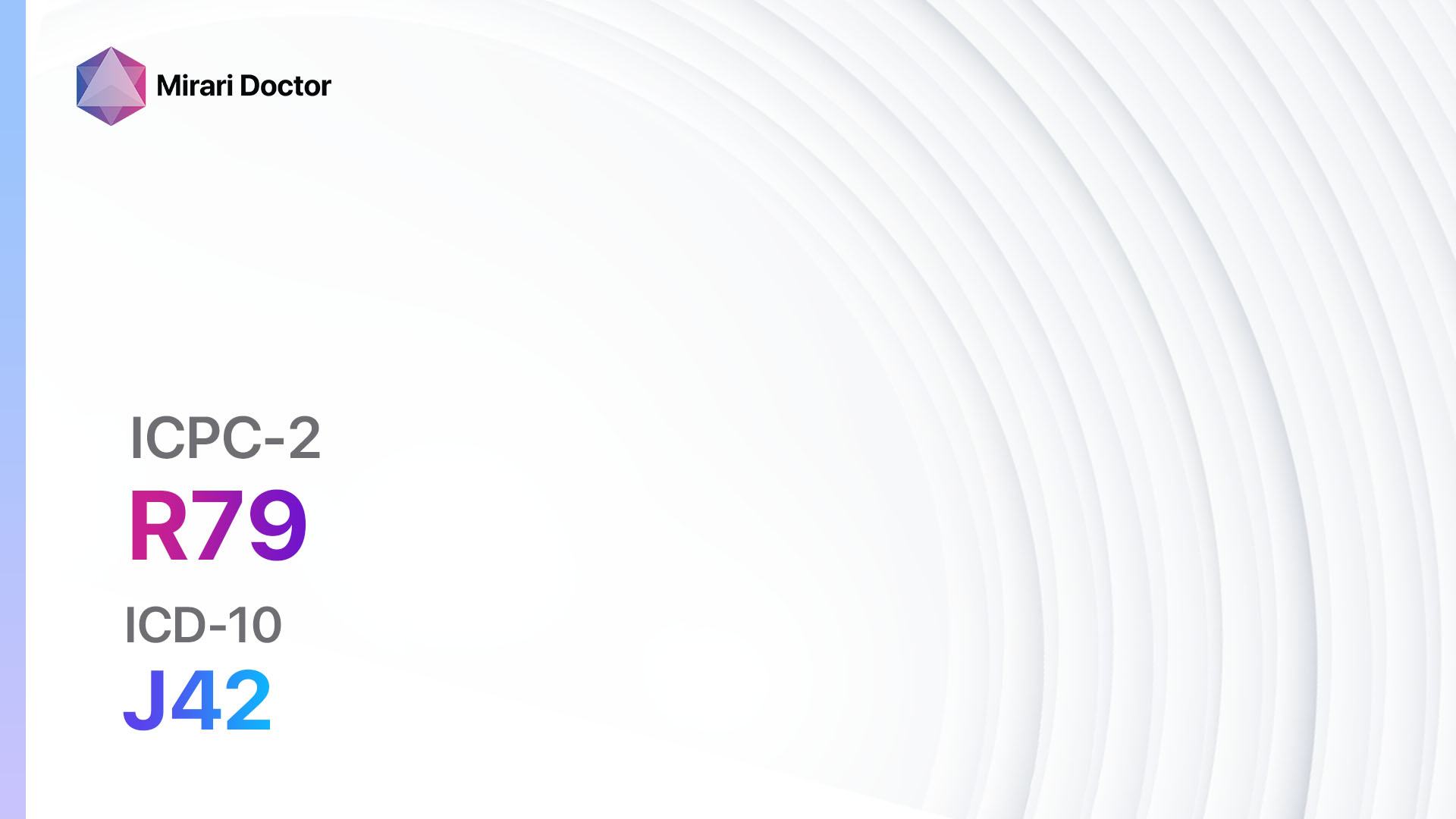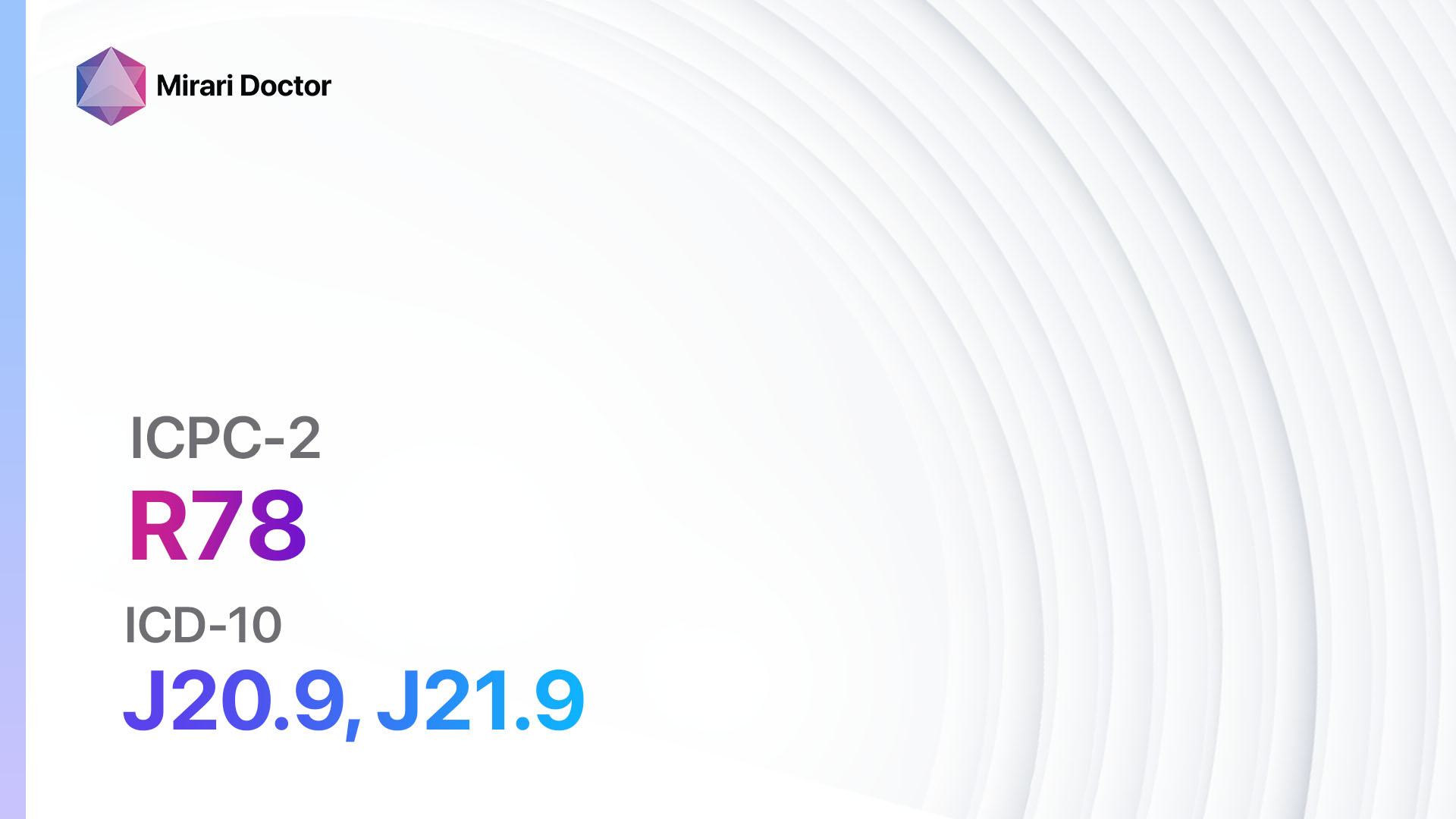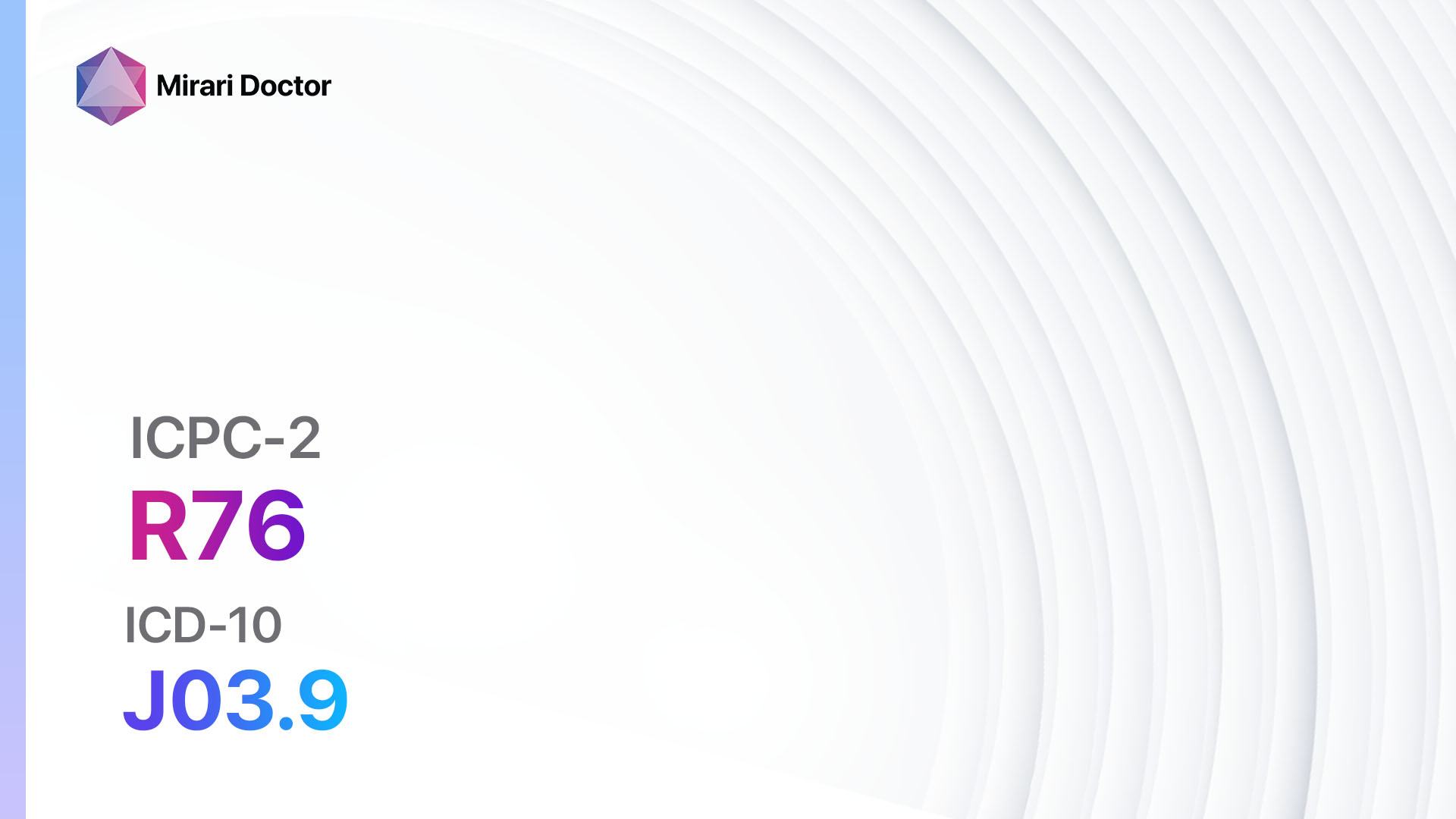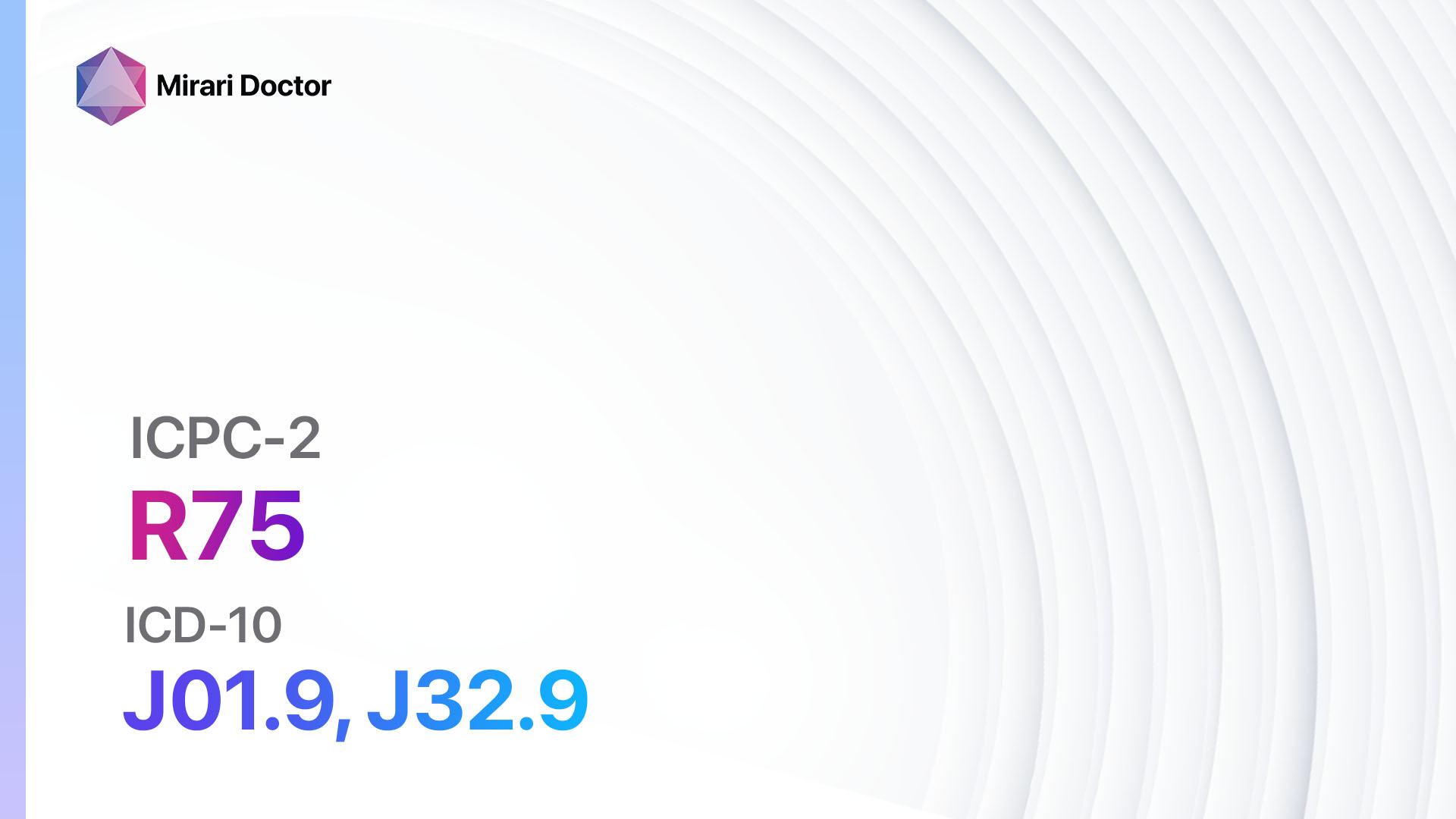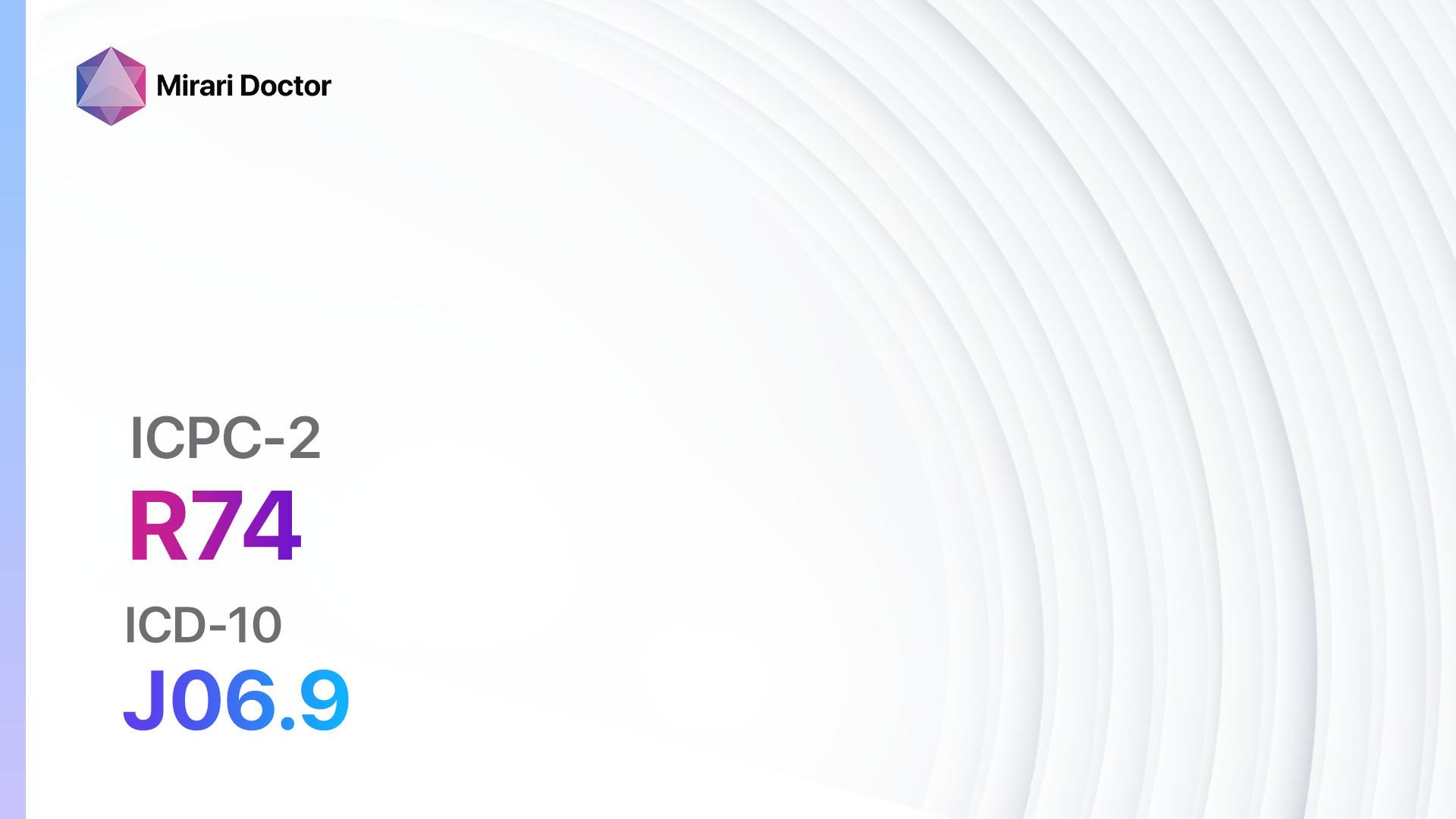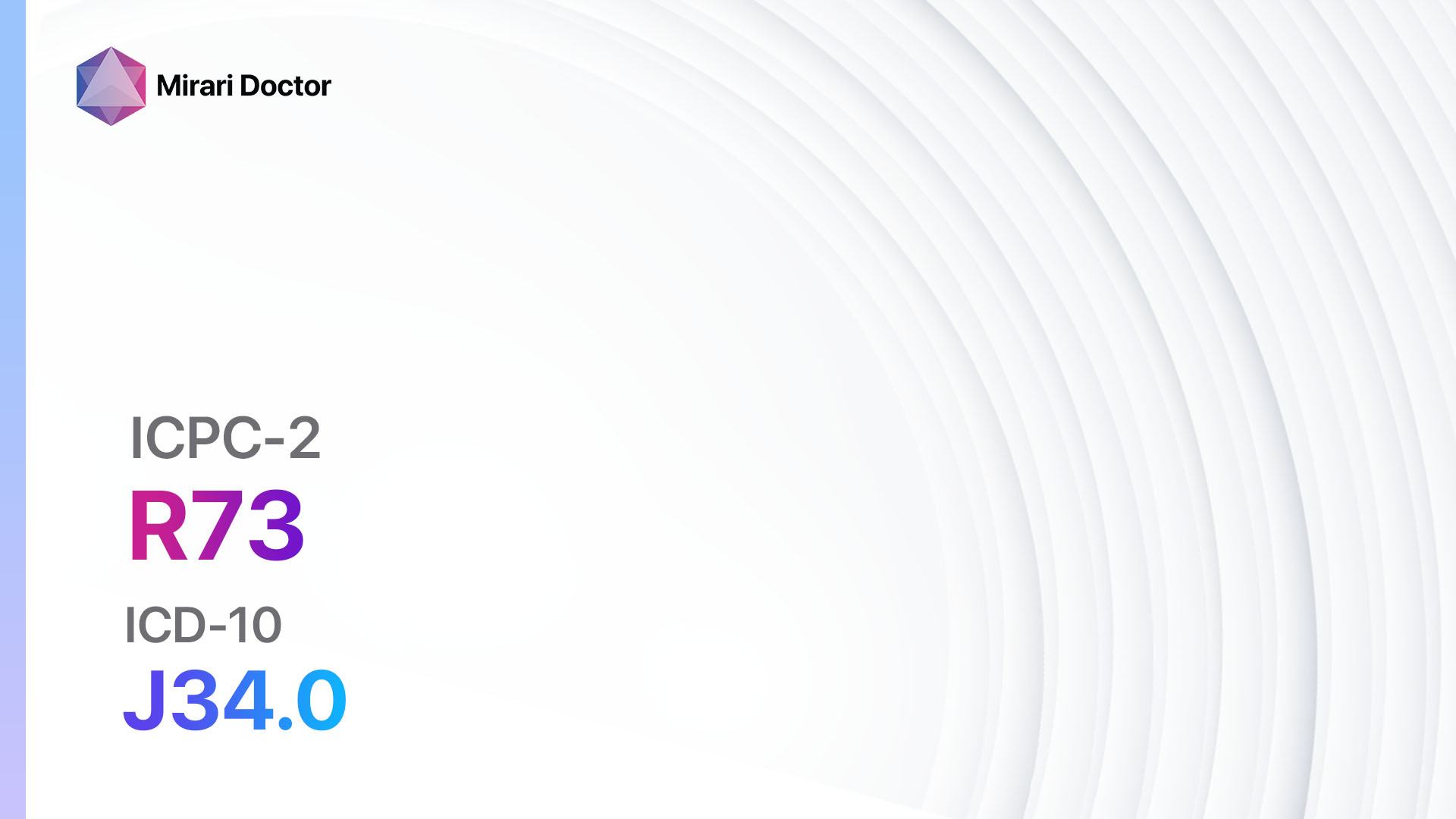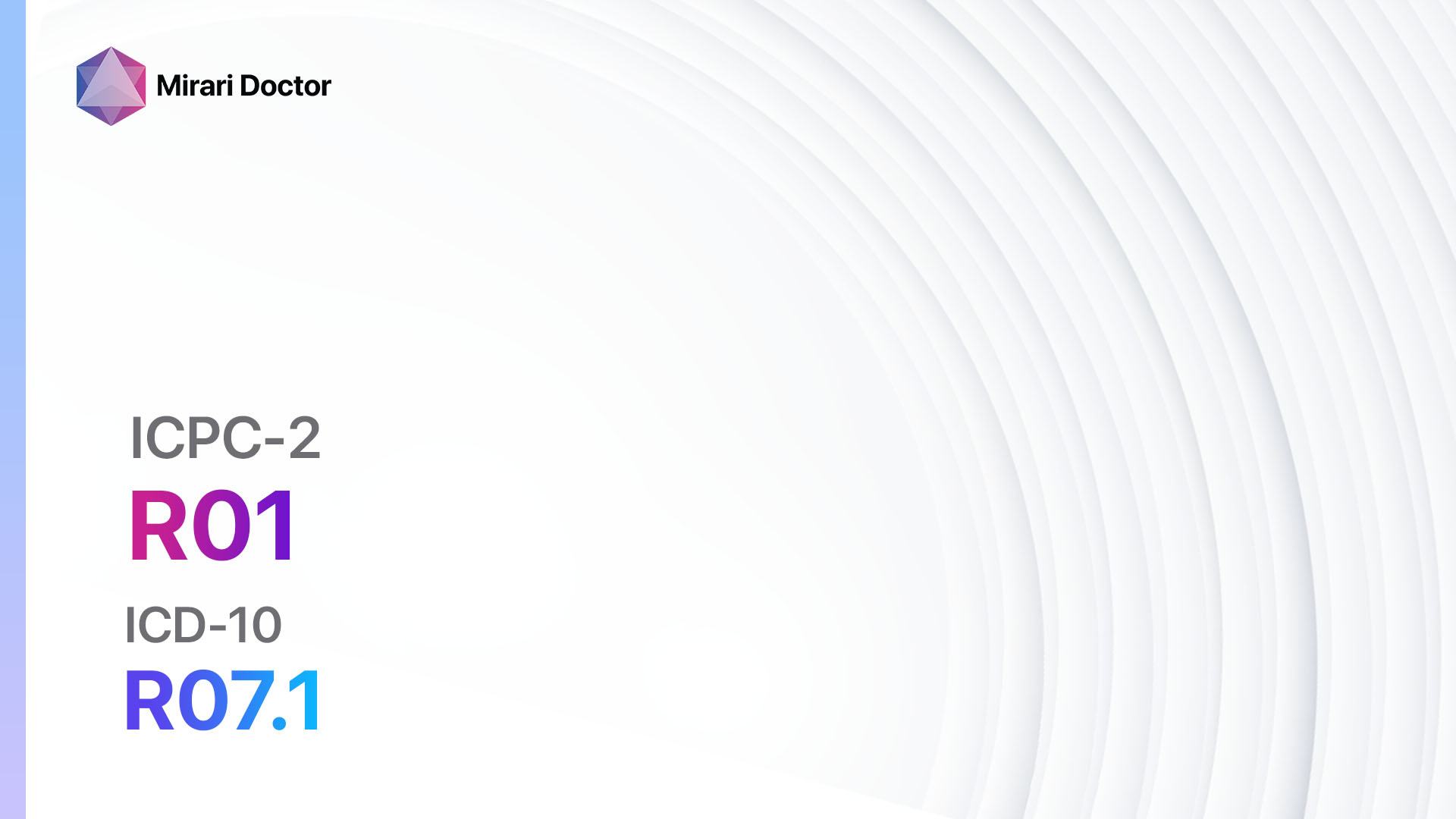
Introduction
Pain in the respiratory system can be a distressing symptom that may indicate an underlying condition. It is important to properly diagnose and manage this pain to provide relief and improve the patient’s quality of life. This guide aims to provide a comprehensive approach to diagnosing and managing pain in the respiratory system[1].
Codes
Symptoms
- Chest pain: A sensation of discomfort or pressure in the chest area[4].
- Shortness of breath: Difficulty breathing or a feeling of breathlessness[5].
Causes
- Respiratory infections: Infections such as pneumonia or bronchitis can cause pain in the respiratory system[6].
- Asthma: Inflammation and narrowing of the airways can lead to chest pain and shortness of breath[7].
- Chronic obstructive pulmonary disease (COPD): This progressive lung disease can cause persistent pain and difficulty breathing[8].
- Pleurisy: Inflammation of the lining of the lungs and chest cavity can result in sharp chest pain[9].
- Pulmonary embolism: A blood clot in the lungs can cause sudden, severe chest pain and difficulty breathing[10].
Diagnostic Steps
Medical History
- Gather information about the patient’s symptoms, including the duration, severity, and any triggering factors.
- Ask about any previous respiratory infections, asthma, or COPD.
- Inquire about any recent travel or prolonged immobility, which may increase the risk of pulmonary embolism.
Physical Examination
- Listen to the patient’s lungs using a stethoscope to assess for abnormal breath sounds.
- Check for any signs of respiratory distress, such as increased respiratory rate or use of accessory muscles.
- Palpate the chest to identify any areas of tenderness or swelling.
Laboratory Tests
- Complete blood count (CBC): To assess for signs of infection or inflammation.
- C-reactive protein (CRP): Elevated levels may indicate inflammation in the respiratory system.
- Arterial blood gas (ABG): Measures oxygen and carbon dioxide levels in the blood to evaluate respiratory function.
- D-dimer: Elevated levels may suggest the presence of a blood clot.
Diagnostic Imaging
- Chest X-ray: To visualize the lungs and assess for any abnormalities.
- Computed tomography (CT) scan: Provides detailed images of the lungs and can detect pulmonary embolism or other structural abnormalities.
- Pulmonary function tests: Measures lung capacity and function to evaluate for asthma or COPD.
Other Tests
- Electrocardiogram (ECG): To rule out any cardiac causes of chest pain.
- Echocardiogram: May be performed to assess heart function and rule out any structural abnormalities.
Follow-up and Patient Education
- Schedule a follow-up appointment to review test results and discuss further management options.
- Provide education on the underlying condition causing the pain and discuss strategies for symptom management.
- Encourage the patient to seek medical attention if the pain worsens or new symptoms develop.
Possible Interventions
Traditional Interventions
Medications:
Top 5 drugs for respiratory system pain:
- Nonsteroidal anti-inflammatory drugs (NSAIDs) (e.g., Ibuprofen, Naproxen):
- Cost: Generic versions can be $3-$20/month.
- Contraindications: History of gastrointestinal bleeding, renal impairment.
- Side effects: Upset stomach, increased risk of bleeding.
- Severe side effects: Gastrointestinal ulcers, kidney damage.
- Drug interactions: Anticoagulants, other NSAIDs.
- Warning: Long-term use may increase the risk of cardiovascular events.
- Bronchodilators (e.g., Albuterol, Salbutamol):
- Cost: Generic versions can be $10-$50/month.
- Contraindications: Hypersensitivity to the medication.
- Side effects: Increased heart rate, tremors.
- Severe side effects: Chest pain, arrhythmias.
- Drug interactions: Beta-blockers, diuretics.
- Warning: Overuse may lead to decreased effectiveness.
- Corticosteroids (e.g., Prednisone, Fluticasone):
- Cost: Generic versions can be $10-$50/month.
- Contraindications: Active infections, systemic fungal infections.
- Side effects: Increased appetite, weight gain.
- Severe side effects: Osteoporosis, adrenal suppression.
- Drug interactions: Anticoagulants, antidiabetic medications.
- Warning: Long-term use may lead to adrenal insufficiency.
- Antibiotics (e.g., Amoxicillin, Azithromycin):
- Cost: Generic versions can be $10-$50/month.
- Contraindications: Allergy to the specific antibiotic.
- Side effects: Upset stomach, diarrhea.
- Severe side effects: Severe allergic reactions, Clostridium difficile infection.
- Drug interactions: Warfarin, oral contraceptives.
- Warning: Overuse may lead to antibiotic resistance.
- Anticoagulants (e.g., Warfarin, Apixaban):
- Cost: Generic versions can be $10-$50/month.
- Contraindications: Active bleeding, history of intracranial hemorrhage.
- Side effects: Increased risk of bleeding.
- Severe side effects: Severe bleeding, allergic reactions.
- Drug interactions: NSAIDs, other anticoagulants.
- Warning: Regular monitoring of blood clotting parameters is required.
Alternative Drugs:
- Antidepressants (e.g., Amitriptyline, Duloxetine): May be used for neuropathic pain associated with respiratory conditions.
- Anticonvulsants (e.g., Gabapentin, Pregabalin): Can help alleviate neuropathic pain.
- Muscle relaxants (e.g., Cyclobenzaprine, Methocarbamol): May be used to relieve muscle spasms causing respiratory pain.
- Opioids (e.g., Oxycodone, Morphine): Reserved for severe pain that is unresponsive to other treatments, due to the risk of addiction and side effects.
- Antihistamines (e.g., Diphenhydramine, Loratadine): Can help alleviate respiratory symptoms associated with allergies.
Surgical Procedures:
- Thoracotomy: Invasive procedure to access and treat conditions affecting the lungs or chest cavity. Cost: $20,000 to $100,000.
- Video-assisted thoracoscopic surgery (VATS): Minimally invasive procedure using small incisions and a camera to visualize and treat lung conditions. Cost: $15,000 to $50,000.
Alternative Interventions
- Acupuncture: May help alleviate respiratory pain and improve lung function. Cost: $60-$120 per session.
- Breathing exercises: Techniques such as pursed-lip breathing or diaphragmatic breathing can help improve respiratory function and reduce pain. Cost: Free.
- Herbal supplements: Certain herbs, such as ginger or turmeric, may have anti-inflammatory properties that can help alleviate respiratory pain. Cost: Varies depending on the specific supplement.
- Yoga or tai chi: These mind-body practices can help improve breathing and reduce pain. Cost: $10-$20 per session.
- Steam inhalation: Inhaling steam from hot water or essential oils can help soothe respiratory pain. Cost: Free or minimal cost.
Lifestyle Interventions
- Smoking cessation: Quitting smoking can significantly improve respiratory symptoms and reduce pain. Cost: Varies depending on the method used (e.g., nicotine replacement therapy, medications, counseling).
- Regular exercise: Engaging in physical activity can improve lung function and reduce respiratory pain. Cost: Varies depending on the chosen activity (e.g., gym membership, home exercise equipment).
- Healthy diet: Consuming a balanced diet rich in fruits, vegetables, and lean proteins can support respiratory health and reduce inflammation. Cost: Varies depending on food choices.
- Stress management: Techniques such as meditation, mindfulness, or counseling can help reduce stress and improve respiratory symptoms. Cost: Varies depending on the chosen method (e.g., self-guided, therapist-guided).
It is important to note that the cost ranges provided are approximate and may vary depending on the location and availability of the interventions.
Mirari Cold Plasma Alternative Intervention
Understanding Mirari Cold Plasma
- Safe and Non-Invasive Treatment: Mirari Cold Plasma is a safe and non-invasive treatment option for various skin conditions. It does not require incisions, minimizing the risk of scarring, bleeding, or tissue damage.
- Efficient Extraction of Foreign Bodies: Mirari Cold Plasma facilitates the removal of foreign bodies from the skin by degrading and dissociating organic matter, allowing easier access and extraction.
- Pain Reduction and Comfort: Mirari Cold Plasma has a local analgesic effect, providing pain relief during the treatment, making it more comfortable for the patient.
- Reduced Risk of Infection: Mirari Cold Plasma has antimicrobial properties, effectively killing bacteria and reducing the risk of infection.
- Accelerated Healing and Minimal Scarring: Mirari Cold Plasma stimulates wound healing and tissue regeneration, reducing healing time and minimizing the formation of scars.
Mirari Cold Plasma Prescription
Video instructions for using Mirari Cold Plasma Device – R01 Pain respiratory system (ICD-10:R07.1)
| Mild | Moderate | Severe |
| Mode setting: 1 (Infection) Location: 4 (Heart, Bile & Pancreas) Morning: 15 minutes, Evening: 15 minutes |
Mode setting: 1 (Infection) Location: 4 (Heart, Bile & Pancreas) Morning: 30 minutes, Lunch: 30 minutes, Evening: 30 minutes |
Mode setting: 1 (Infection) Location: 4 (Heart, Bile & Pancreas) Morning: 30 minutes, Lunch: 30 minutes, Evening: 30 minutes |
| Mode setting: 2 (Wound Healing) Location: 4 (Heart, Bile & Pancreas) Morning: 15 minutes, Evening: 15 minutes |
Mode setting: 2 (Wound Healing) Location: 4 (Heart, Bile & Pancreas) Morning: 30 minutes, Lunch: 30 minutes, Evening: 30 minutes |
Mode setting: 2 (Wound Healing) Location: 4 (Heart, Bile & Pancreas) Morning: 30 minutes, Lunch: 30 minutes, Evening: 30 minutes |
| Total Morning: 30 minutes approx. $5 USD, Evening: 30 minutes approx. $5 USD |
Total Morning: 60 minutes approx. $10 USD, Lunch: 60 minutes approx. $10 USD, Evening: 60 minutes approx. $10 USD, |
Total Morning: 60 minutes approx. $10 USD, Lunch: 60 minutes approx. $10 USD, Evening: 60 minutes approx. $10 USD, |
| Usual treatment for 7-60 days approx. $70 USD – $600 USD | Usual treatment for 6-8 weeks approx. $1,260 USD – $1,680 USD |
Usual treatment for 3-6 months approx. $2,700 USD – $5,400 USD
|
 |
|
Use the Mirari Cold Plasma device to treat Pain respiratory system effectively.
WARNING: MIRARI COLD PLASMA IS DESIGNED FOR THE HUMAN BODY WITHOUT ANY ARTIFICIAL OR THIRD PARTY PRODUCTS. USE OF OTHER PRODUCTS IN COMBINATION WITH MIRARI COLD PLASMA MAY CAUSE UNPREDICTABLE EFFECTS, HARM OR INJURY. PLEASE CONSULT A MEDICAL PROFESSIONAL BEFORE COMBINING ANY OTHER PRODUCTS WITH USE OF MIRARI.
Step 1: Cleanse the Skin
- Start by cleaning the affected area of the skin with a gentle cleanser or mild soap and water. Gently pat the area dry with a clean towel.
Step 2: Prepare the Mirari Cold Plasma device
- Ensure that the Mirari Cold Plasma device is fully charged or has fresh batteries as per the manufacturer’s instructions. Make sure the device is clean and in good working condition.
- Switch on the Mirari device using the power button or by following the specific instructions provided with the device.
- Some Mirari devices may have adjustable settings for intensity or treatment duration. Follow the manufacturer’s instructions to select the appropriate settings based on your needs and the recommended guidelines.
Step 3: Apply the Device
- Place the Mirari device in direct contact with the affected area of the skin. Gently glide or hold the device over the skin surface, ensuring even coverage of the area experiencing.
- Slowly move the Mirari device in a circular motion or follow a specific pattern as indicated in the user manual. This helps ensure thorough treatment coverage.
Step 4: Monitor and Assess:
- Keep track of your progress and evaluate the effectiveness of the Mirari device in managing your Pain respiratory system. If you have any concerns or notice any adverse reactions, consult with your health care professional.
Note
This guide is for informational purposes only and should not replace the advice of a medical professional. Always consult with your healthcare provider or a qualified medical professional for personal advice, diagnosis, or treatment. Do not solely rely on the information presented here for decisions about your health. Use of this information is at your own risk. The authors of this guide, nor any associated entities or platforms, are not responsible for any potential adverse effects or outcomes based on the content.
Mirari Cold Plasma System Disclaimer
- Purpose: The Mirari Cold Plasma System is a Class 2 medical device designed for use by trained healthcare professionals. It is registered for use in Thailand and Vietnam. It is not intended for use outside of these locations.
- Informational Use: The content and information provided with the device are for educational and informational purposes only. They are not a substitute for professional medical advice or care.
- Variable Outcomes: While the device is approved for specific uses, individual outcomes can differ. We do not assert or guarantee specific medical outcomes.
- Consultation: Prior to utilizing the device or making decisions based on its content, it is essential to consult with a Certified Mirari Tele-Therapist and your medical healthcare provider regarding specific protocols.
- Liability: By using this device, users are acknowledging and accepting all potential risks. Neither the manufacturer nor the distributor will be held accountable for any adverse reactions, injuries, or damages stemming from its use.
- Geographical Availability: This device has received approval for designated purposes by the Thai and Vietnam FDA. As of now, outside of Thailand and Vietnam, the Mirari Cold Plasma System is not available for purchase or use.
References
- Dezube, R. (2021). Shortness of Breath (Dyspnea). Merck Manual Consumer Version. https://www.msdmanuals.com/home/lung-and-airway-disorders/symptoms-of-lung-disorders/shortness-of-breath
- ICD-10. (n.d.). R07.1 Chest pain on breathing. https://www.icd10data.com/ICD10CM/Codes/R00-R99/R00-R09/R07-/R07.1
- WebMD. (2020). Causes of Chest Pain & Tightness. https://www.webmd.com/pain-management/whats-causing-my-chest-pain
- Healthline. (2020). What Can Cause Shortness of Breath and What Does It Feel Like? https://www.healthline.com/health/what-does-shortness-of-breath-feel-like
- Cleveland Clinic. (2023). Chest Pain: What It Feels Like, Causes & Treatment. https://my.clevelandclinic.org/health/symptoms/21209-chest-pain
- American Lung Association. (2024). Warning Signs of Lung Disease. https://www.lung.org/lung-health-diseases/warning-signs-of-lung-disease
- Lung Foundation Australia. (n.d.). Signs & symptoms. https://lungfoundation.com.au/lung-health/lung-disease/signs-and-symptoms-of-lung-disease/
- Vinmec. (n.d.). Why do you have chest pain when taking a deep breath? https://www.vinmec.com/en/cardiology/health-news/why-do-you-have-chest-pain-when-taking-a-deep-breath/
- Medical News Today. (2021). Chest pain when breathing deeply: Causes and treatment. https://www.medicalnewstoday.com/articles/chest-pain-when-breathing-deeply
- Healthdirect. (n.d.). Shortness of breath – causes, symptoms and treatments. https://www.healthdirect.gov.au/shortness-of-breath
Related articles
Made in USA


